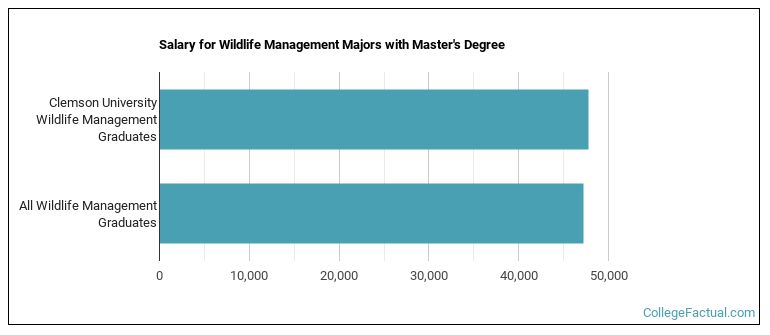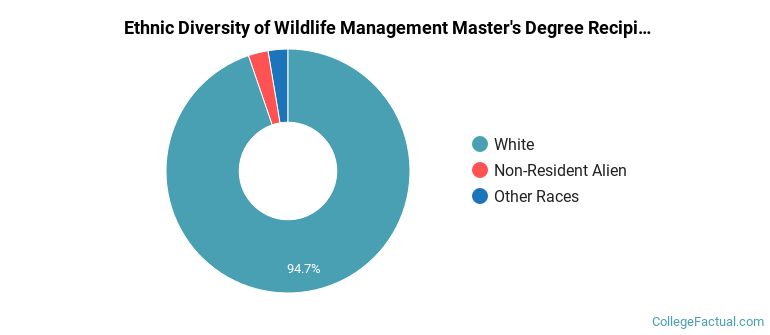 by our College Data Analytics Team
by our College Data Analytics TeamHere, you'll find out more about the major, including such details as the number of graduates, what degree levels are offered, ethnicity of students, and more. Also, learn how Clemson ranks among other schools offering degrees in wildlife.
Jump to any of the following sections:
Learn about start dates, transferring credits, availability of financial aid, and more by contacting the universities below.
BS in Environmental Science - Natural Resources & Conservation
Develop a broad-based interdisciplinary skill set to solve complex environmental problems like climate change, alternative energy and sustainability with a specialized online degree from Southern New Hampshire University.
The bachelor's program at Clemson was ranked #8 on College Factual's Best Schools for wildlife list.
In 2022, 46 students received their master’s degree in wildlife from Clemson. This makes it the #1 most popular school for wildlife master’s degree candidates in the country.
In 2022-2023, the average part-time undergraduate tuition at Clemson was $1,695 per credit hour for out-of-state students. The average for in-state students was $654 per credit hour. Information about average full-time undergraduate tuition and fees is shown in the table below.
| In State | Out of State | |
|---|---|---|
| Tuition | $14,038 | $37,982 |
| Fees | $1,516 | $1,516 |
| Books and Supplies | $1,436 | $1,436 |
| On Campus Room and Board | $12,872 | $12,872 |
| On Campus Other Expenses | $5,476 | $5,476 |
Learn more about Clemson tuition and fees.
Clemson does not offer an online option for its wildlife bachelor’s degree program at this time. To see if the school offers distance learning options in other areas, visit the Clemson Online Learning page.
Graduates of the master's wildlife program at Clemson make a median salary of $47,819. This is a better than average outcome since the median salary for all wildlife graduates with a master's is $47,225.

Of the 38 wildlife students who graduated with a master's degree in 2021-2022 from Clemson, about 50% were men and 50% were women.

The majority of master's degree recipients in this major at Clemson are white. In the most recent graduating class for which data is available, 95% of students fell into this category.
The following table and chart show the ethnic background for students who recently graduated from Clemson University with a master's in wildlife.

| Ethnic Background | Number of Students |
|---|---|
| Asian | 0 |
| Black or African American | 0 |
| Hispanic or Latino | 0 |
| White | 36 |
| Non-Resident Aliens | 1 |
| Other Races | 1 |
Take a look at the following statistics related to the make-up of the wildlife majors at Clemson University.
| Related Major | Annual Graduates |
|---|---|
| Forestry | 43 |
| Natural Resources Conservation | 35 |
More about our data sources and methodologies.